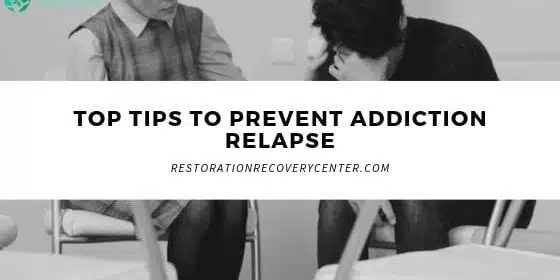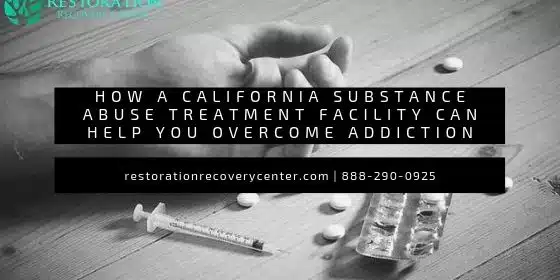Why Is ADD an Outdated Term?
During your recovery journey, you may have received a dual diagnosis of attention deficit hypersensitivity disorder (ADHD) and substance use. But what is ADHD? Is it the same as attention deficit disorder (ADD)? Is ADD only for people with attention-deficit symptoms? ADD is an outdated term from the 80s. It is no longer in the Diagnostic and Statistical Manual of Mental Disorders (DSM) or used among professionals. Instead, ADHD is used to diagnose attention-deficit and hyperactive-impulsive symptoms.
This initial change was controversial as some people who previously identified as having ADD didn’t see themselves falling under the new term. However, understanding the history of ADHD clarifies the need for this change and may help you understand your ADHD symptoms.
History of ADHD
As we research and learn more about ADHD, the definition and criteria for diagnosis are revised. The Diagnostical and Statistical Manual of Mental Health Disorders (DSM) identify and diagnose mental health disorders. The manual is updated regularly to suit scientific research and more accurately define and diagnose mental health disorders.
Early Depictions
Behaviors of inattentiveness and hyperactivity date back to the 1800s, before the DSM. In 1798, A Scottish physician, Sir Alexander Crichton, published a book about his case studies on insanity and mental health disorders. The second chapter of his book was entitled “On Attention and its Diseases.”
According to a research article listed on Springer, Crichton characterizes attention diseases as “‘the incapacity of attending with a necessary degree of constancy to any one object.'” Another early depiction of ADHD comes from a children’s story entitled “Fidgety Phil.” However, the first recognized scientific definition of ADHD was by George Frederic Still, who classified it as a disorder in Moral Control.
Hyperkinetic Reaction of Childhood
In the 1960s, hyperactivity was recognized as a behavioral syndrome. The first appearance of hyperactivity in the DSM occurred in 1968 with the publication of the DSM-II. The disorder was labeled Hyperkinetic Reaction of Childhood, described as overactivity, restlessness, distractibility, and a short attention span. It focused on symptoms of excessive motor activity in children.
Under this definition, hyperactivity was defined as a need for stimulation that made it difficult to concentrate on essential tasks. Children with this disorder were described as:
- Using objects for stimuli instead of for their intended use
- Leaving tasks uncompleted
- Having unstable moods
- Experiencing increased excitability
- Aggressive tendencies
ADD
The DSM-II, published in the 1980s, emphasized attention deficit instead of hyperactive symptoms. As a result, beliefs about the disorder shifted, and hyperactivity was no longer essential to the retitled ADD diagnosis. The definition of the disorder was also more specific about the symptoms required for diagnosis. ADHD was divided into two subtypes ADD with hyperactivity and ADD without Hyperactivity.
This shift in definition occurred because researchers believed that the disorder’s more prominent features were impulse control and attention deficit. These symptoms were also the most treatable by stimulant treatment.
ADHD
The DSM-III was revised in 1987 and renamed ADD, hyperactive attention deficit disorder (ADHD). This is the name used in the most current version of the DSM, the DSM-5. The decision to rename the disorder occurred when researchers observed no significant differences between hyperactive and non-hyperactive ADD. Hyperactivity symptoms were re-emphasized by putting the word back in the disorder’s name. This revision of the diagnosis included all symptoms in one list, not separating attention-deficit and hyperactive symptoms.
ADHD in the DSM-4 and DSM-5
In the 1990s, the disorder was finally recognized in adults as a chronic disorder that does not necessarily disappear with childhood. This was reflected in the fourth version of the DSM, published in 1994. In this version of the DSM, the ADHD diagnosis was divided into three categories:
- Predominantly hyperactive
- Predominately attention-deficit
- Prominently hyperactive and attention-deficit
Attention Deficit symptoms were associated with daydreaming, hypoactivity, and academic disabilities but were not associated with aggression or social rejection like hyperactive symptoms were.
Modern Definition and Diagnosis
The modern definition of ADHD includes defining inattentive, hyperactivity, and impulsivity, all of which are important to its definition. Criteria for ADHD in adults include five symptoms of inattention and five symptoms of hyperactivity and impulsivity.
This allows individuals who display more inattentive symptoms or more hyperactivity symptoms to both meet the criteria for diagnosis. However, you don’t need to be both hyperactive and attention-deficit to have ADHD. The DSM-5 also details adults’ symptoms, adding that school distractions can transfer over to the workplace.
Treatment Options
Both medication and psychotherapy can treat ADHD. Stimulant medications tend to be the most effective treatment for ADHD but should not be taken without a prescription. Some non-stimulant medications are used to treat ADHD, such as antidepressants.
Psychotherapy such as cognitive behavioral therapy (CBT) is most useful when ADHD occurs with other mental health disorders. In addition, working with a mental health professional can provide you with tools that can make your daily tasks more manageable and less overwhelming.
ADHD has become a term inclusive of both attention deficit and hyperactive-impulsive symptoms. The more we learn about behavioral patterns associated with ADHD, the easier it will be to treat and diagnose. Restoration Recovery Center treats dual diagnoses such as ADHD and substance use disorders. Our mental health professionals tailor their treatment plans to be specific to each person’s recovery and mental health goals. We believe in treating all mental health symptoms simultaneously because we understand that your ADHD symptoms affect your substance use symptoms and vice versa. We see you as the complex person that you are. You are not a number to us. If you or someone you know is struggling with substance use, please call (888) 290-0925 to learn how we can help you achieve long-term sobriety through treatments that focus on the body, mind, and spirit.






